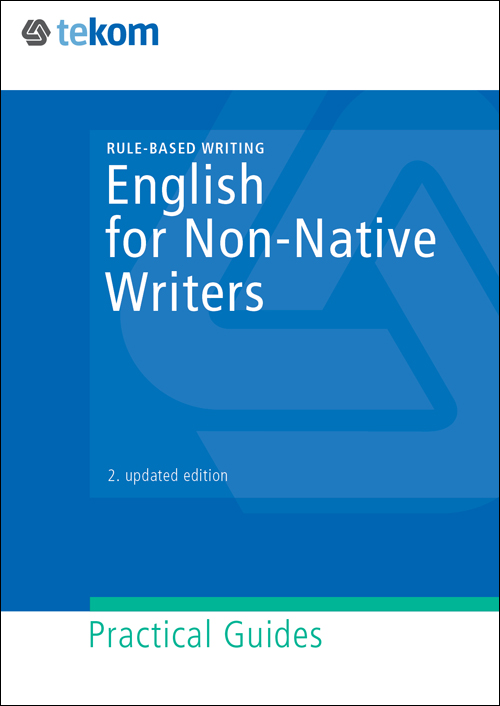
Bibliografische Information
DIN A4,
110 Seiten,
2., updated edition 2017
ISBN 978-3-944449-57-9 (Softcover)
PDF,
110 Seiten,
2., updated edition 2017
ISBN 978-3-944449-63-0 (E-Book PDF)
English for Non-Native Writers
Autor(en): Erdmann, Fleury, Nickl, Johnson Coenen, Link, Longbotham, Reuther, Schöffer, Siegel
Verlag: tcworld GmbH
- Themen:
- Sprache
- Kategorien:
- Praxisleitfäden
- Stichworte:
- Schreibregeln
90,00 € (für Mitglieder 60,00 €) Softcover, 110 Seiten Lieferzeit: 5-7 Arbeitstage Status: Verfügbar
75,00 € (für Mitglieder 50,00 €) E-Book PDF, 110 Seiten Lieferzeit: 2-3 Arbeitstage Status: Verfügbar
127,50 € (für Mitglieder 85,00 €) Bundle Softcover & E-Book PDF
Do you often find yourself having to write documents in English, though English isn't your native language? If so, like others in the same situation, perhaps you wish you had a help reference with special focus on the needs of authors who are not native speakers. If you're looking for a reliable handbook that makes the most important rules and common errors accessible in a clear and concise manner, or you need linguistic rules for everyday editing that integrate well into existing editing guides, this guide is indispensible.
With the guide "English for Non-Native Writers," tekom bridges a gap that many writers and editors have complained about. The guidelines consolidate the most essential standards and rules for technical writing in English. They also offer important suggestions on writing for limited space, such as information products on mobile end-devices.
However, the guide is more than just another rulebook for technical English, concentrating in particular on the needs of authors who must write in English as a foreign language. The guide can not only be used as a basic set of rules for all everyday editing, but also expanded as required. The guide offers precise rules in the areas of:
- Text, e.g. headings, index entries, cross-references, glossaries;
- Sentences, e.g. punctuation, verb tenses, word order; and
- Word usage, e.g. prepositions, articles, and dealing with abbreviations.
Every rule contains a brief explanation, comprehensive information on and decision guides for implementing each rule, several negative and positive examples and an estimation of the feasibility of automated proofing using language software. This way, each rule can be integrated into existing editing guidelines or used as a basis for introducing editing software.